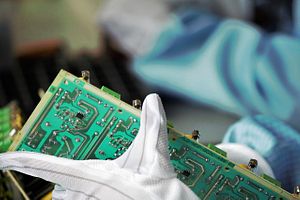Trans-Pacific View author Mercy Kuo regularly engages subject-matter experts, policy practitioners and strategic thinkers across the globe for their diverse insights into the U.S. Asia policy. This conversation with Mark Li, Senior Research Analyst at Sanford C. Bernstein, is the 148th in “The Trans-Pacific View Insight Series.”
Explain the impact of U.S. sanctions on ZTE on China’s semiconductor demand.
The direct impact of the sanction is not on China’s semiconductor demand. Instead, it impairs severely ZTE’s ability to make telecom equipment as the equipment needs chips from the U.S. But the sanction highlights China’s vulnerability because of the lack of good domestic semiconductor supply chain.
With China’s reliance on imports of foreign-made microchips, how will it achieve “Made in China 2025”?
Growing the domestic supply chain itself is part of “Made in China 2025” and China should be able to make some progress according to the plan. Despite this, many objectives of “Made in China” will still require imported chips as domestic suppliers won’t be able to do most of the high-end chips by 2025.
Explain the strategic position of the Taiwan Semiconductor Manufacturing Company (TSMC) in the global semiconductor market?
TSMC is absolutely critical in this market as the company produces a lot of smartphone, TV, or even AI processor chips.
Does China have any competitive domestic semiconductor foundries? Explain.
Not quite. SMIC is the most advanced domestic foundry but is still behind TSMC in technologies by a large margin. Financial performance is also far behind.
What is the potential impact of China’s domestic semiconductor-building efforts on the U.S. semiconductor industry?
There should be an opportunity in the next few years as China will need to buy a lot of equipment. Long term, it could turn into a threat, especially in the low-end part of the industry. China can be a long-term threat as the domestic suppliers will become better over time, given the government support, talent supply, vast local consumption, and strong downstream supply chain (e.g. smartphone/TV/PC OEMs and component suppliers). The domestic suppliers may not be as good as the top-tier global rivals, but possibly can emerge as a credible-threat, low-end foreign suppliers.

































